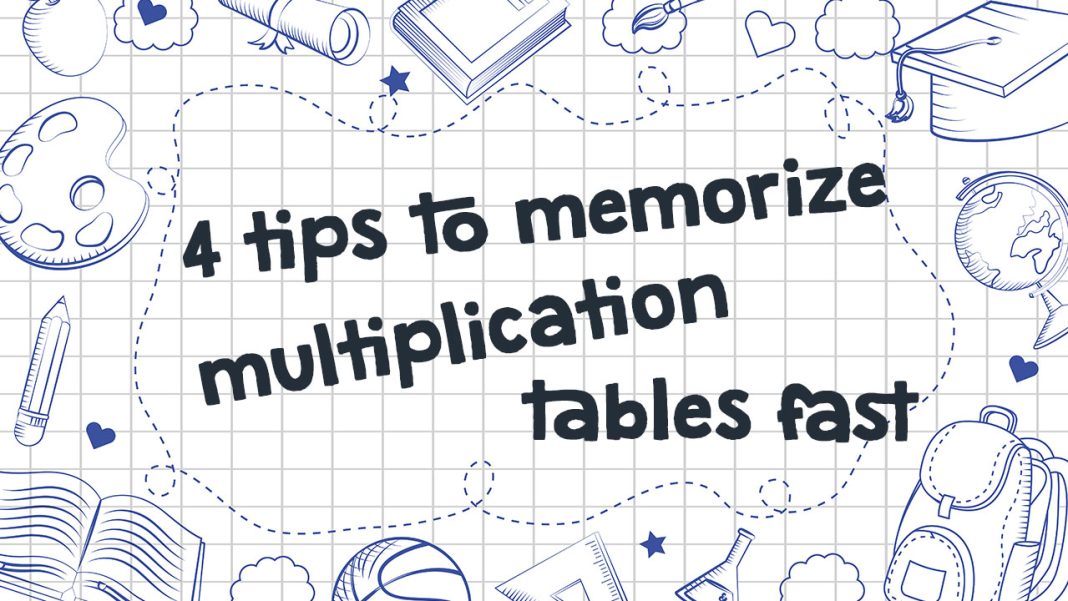Learning multiplication tables can seem like a daunting task for many. However, with the right strategies and techniques, you can easily get a hang of these numbers and improve your mathematical abilities.
Start with Skip Counting
Skip counting is essentially counting by intervals. For example, if you want to learn the 2 times table, you would count by 2s: 2, 4, 6, 8, and so on. This technique helps build a strong foundation for learning multiplication tables as it gives you a clear understanding of how numbers relate to each other.
How to practice skip counting:
- Pick an interval (e.g., 2, 3, or 5).
- Start at zero and add the interval continuously, one step at a time (0+2=2, 2+2=4, 4+2=6…).
- Continue until you reach the desired range (e.g., up to 10x the interval).
- Repeat the process with different intervals.
Once you’re comfortable with skip counting, you’ll find it much easier to recall multiplication facts quickly.
Use Visual Aids
Creating visual representations of multiplication tables can help reinforce your understanding and make it simpler for you to remember them. One popular method is using a multiplication chart, which presents all the products in an organized grid format.
How to create a multiplication chart:
- Draw a square grid with an equal number of rows and columns (e.g., 10×10).
- Label the first row and column with numbers 1 to 10.
- Fill in each square with the product of its corresponding row and column numbers.
When you have completed your multiplication chart, spend some time studying it. You’ll be surprised how much easier it becomes to remember the tables when they are visually represented.
Practice with Games and Activities
Memorizing multiplication tables can get monotonous at times. To keep things interesting and enjoyable, try engaging in games or activities that make practicing fun and interactive.
Some exciting games and activities for learning multiplication tables include:
- Card games: Use a deck of cards to create multiplication problems. For example, deal two cards and multiply their values together.
- Board games: Modify classic board games like Monopoly or Snakes and Ladders by incorporating multiplication tasks into gameplay.
- Online games: There are many online math games specifically designed to help students practice their multiplication skills.
- Flashcards: Create flashcards with multiplication facts and quiz yourself regularly.
By incorporating these entertaining and educational activities into your routine, you’ll find yourself becoming more confident and proficient with multiplication tables.
Break Down Larger Tables
When it comes to larger multiplication tables, like the 11s and 12s, it might seem overwhelming at first. However, breaking them down into smaller, more manageable components can make them significantly easier to learn.
Here’s how you can break down larger multiplication tables:
- Split the table into smaller parts. For example, when learning the 12 times table, focus on the first half (i.e., up to 6×12) before moving on to the second half.
- Find patterns or shortcuts within the table. In the case of the 11 times table, multiplying a single-digit number by 11 usually results in that number repeated twice (e.g., 3×11=33).
- Relate the larger table to a smaller one. For example, when multiplying by 9, simply multiply by 10 and then subtract the original number (e.g., 4×9 = 40-4 = 36).
Breaking down larger tables makes them less intimidating and more approachable, ultimately helping you learn them faster.
Consistent Practice and Review
The key to successfully mastering multiplication tables is consistent practice and review. Spend some time each day working on a specific set of tables, and rotate through all of them over time. By doing this, you’ll continue to reinforce your understanding and keep the information fresh in your mind.
Some tips for effective practice and review:
- Create a schedule that covers all the tables you want to learn.
- Commit to practicing for a specific duration each day.
- Vary your practice methods to maintain interest and engagement (e.g., games, flashcards, etc.).
- Regularly assess your progress and adjust your plan accordingly.
With dedication and consistent effort, you will soon find yourself mastering multiplication tables quickly and easily.

